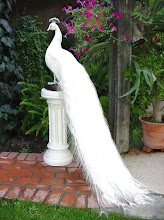aThe Vedas
The Vedas are considered the most sacred and treasured texts of India. The Vedas are a collection of hymns that were received by the ancient rishis (sages) as shruti, divine revelation. As hymns and mantras, these works were actively recited out loud to both praise and invoke the powers of the spiritual realms, and had been verbally passed on for many generations before written down on delicate palm leaves. These Vedic mantras were utilized in yagas and yajnas (ritual sacrifices and ceremonies) for promoting the well being of individuals, society and the world. As the oldest texts in any Indo-European language, it’s astounding that within these works the foundations of yoga are established, with yoga being defined as "yoking" and as a "discipline." The Vedas provided the spiritual core and philosophical foundations for the future development of both yoga and Hinduism.
There are four texts that compose the Vedas: Rig-Veda, Sama-Veda, Yajur-Veda and Atharva-Veda.
The Rig-Veda is the oldest, dating back to 1500 B.C.E., and is the most revered and important of the four. The Rig-Veda’s collection of inspired hymns and mantras were used to invoke courage, happiness, health, peace, prosperity, success, and wisdom. In the Rig-Veda we learn the now famous Gayatri mantra, which is still used today for its potent spiritual qualities. We also find the first use and definition of the word yoga. These verses provide the foundation and material for the remaining Vedas.
The Sama-Veda is purely a devotional collection of melodies (saman) used to elevate one’s consciousness. The hymns in the Sama-Veda are combined with musical notes, and their content was heavily drawn from the Rig-Veda, providing no distinctive lessons of their own. This use of music combined with mantras formed the foundation for the Bhakti yoga practice of kirtan, devotional chanting.
The Yajur-Veda is devoted entirely to the worship of the deities and the instruction for the technical aspects of ceremonies. The Yajur-Veda served as a handbook for the Vedic priests who executed sacrificial acts through simultaneously chanting the hyms and mantras while following the sacrificial formula (yajus).
The Atharva-Veda consists of spells and charms to dispel evil, disease and misfortune. Its hymns are of a more diverse character than the Rig-Veda and were composed of a simpler language making them more accessible to the general population.
The Vedas expounded a diverse set of practices, ideas and concepts; among them was an primitive form of yoga as well as one of the world’s oldest, diverse and complex spiritual philosophies. Six main schools of philosophy emerged from these teachings. These Darshanas (viewpoints) all systematically represent the core ideas illuminated in the Vedas. They are: Nyaya (logic), Vaiseshika (analysis of the universe), Samkhya (classification of the universe), Yoga (union with the Divine), Mimansha (ritual interpretation of the Vedas), and Vedanta (inquiry into the Self).
Because all of these philosophical systems draw from the same source, they are seen to complement rather than compete with each other. Over time, Vaisheshika, Nyaya, and Mimamsa have become somewhat obsolete and are not actively practiced. Samkhya, Vedanta, and Yoga continue to have a strong importance and influence in Indian thought and many of the practices that evolved out of these Darshanas continue to be practiced today.
skip to main |
skip to sidebar

smart
pea cock

smart
indianhot2
indianhot1
I P counter

Powered byIP2Location.com
eenadu
Blog Archive
-
▼
2008
(326)
-
▼
February
(243)
- aartical240
- aartical239
- aartical238
- aartical237
- aartical236
- aartical235
- aartical234
- aartical233
- aartical232
- aartical231
- aartical230
- aartical229
- aartical228
- aartical227
- aartical226
- aartical225
- aartical224
- aartical223
- aartical222
- aartical221
- aartical220
- aartical219
- aartical218
- aartical217
- aartical216
- aartical215
- aartical214
- aartical213
- aartical212
- aartical211
- aartical210
- aartical209
- aartical207
- aartical206
- aartical205
- aartical204
- aartical203
- aartical202
- aartical201
- aartical200
- aartical199
- aartical197
- aartical196
- aartical195
- aartical194
- aartical193
- aartical192
- aartical191
- aartical190
- aartical189
- aartical188
- aartical187
- aartical186
- aartical185
- aartical184
- aartical183
- aartical182
- aartical181
- aartical180
- aartical179
- aartical178
- aartical177
- aartical176
- aartical175
- aartical174
- aartical173
- aartical172
- aartical171
- aartical170
- aartical169
- aartical168
- aartical167
- aartical166
- aartical165
- aartical164
- aartical163
- aartical162
- aartical161
- aartical160
- aartical158
- aartical157
- aartical156
- aartical155
- aartical154
- aartical153
- aartical152
- aartical151
- aartical150
- aartical149
- aartical148
- aartical147
- aartical146
- aartical145
- aartical144
- aartical143
- aartical142
- aartical141
- aartical140
- aartical139
- aartical138
-
▼
February
(243)
No comments:
Post a Comment